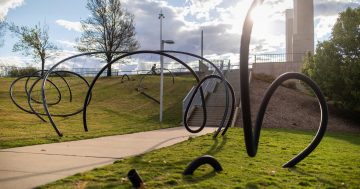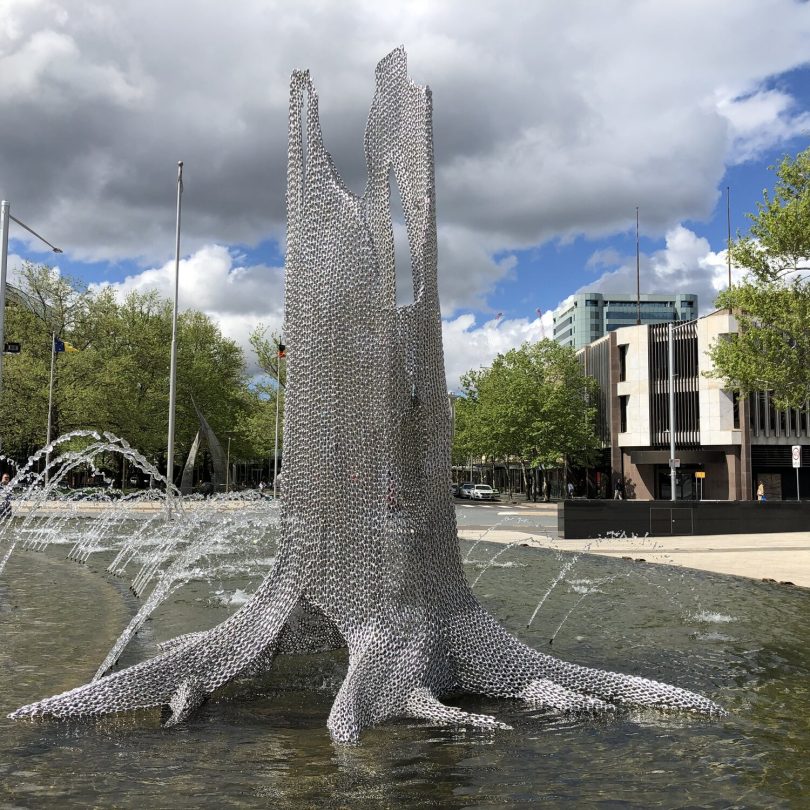
Cloak, by Jeremy Blincoe and Michael van Dam, currently occupies the Civic Square fountain for Contour 556. Photo: Supplied.
Here’s a test for Canberra’s old-timers: who remembers when there was a giant hot pink lava lamp in the middle of Civic Square?
Skywhale, the Belconnen owl and the tumbling grasses next to the GDE are far from the first eyebrow-raising public art in the city’s history. Today, Jeremy Blincoe’s and Michael Van Dam’s piece, Cloak, occupies the Civic Square fountain for Contour 556.
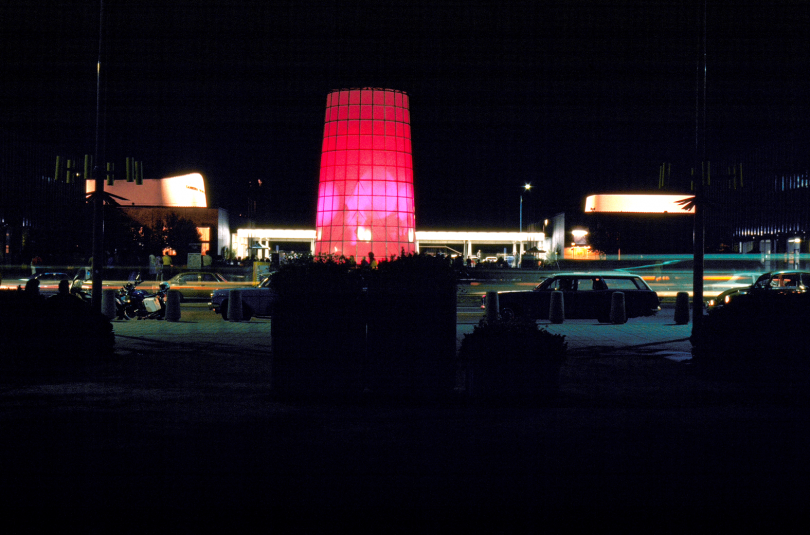
Civic Square Australia 75 and the hot pink installation. Photo: John Hamilton
But back in the heady Whitlam era, Canberra played host to a wild event called Australia 75, a celebration of creativity in the arts and sciences.
The Australia 75 Festival included film, science, a children’s festival and computer art, the Sidney Nolan collection and pop legend Marcia Hines. The wild pink explosion in the Civic Square fountain was a work called Chromasonic Tower, by experimental multimedia artist Stan Ostoja-Kotkowski.
Thirty-two other sculptures were installed in Commonwealth Park including Bert Flugelman’s piece, Earthwork. The aluminium tetrahedrons were buried in a deep trench, and are still down there, marked by a discreet sign. In the process, they’ve entered the city’s arts mythology.
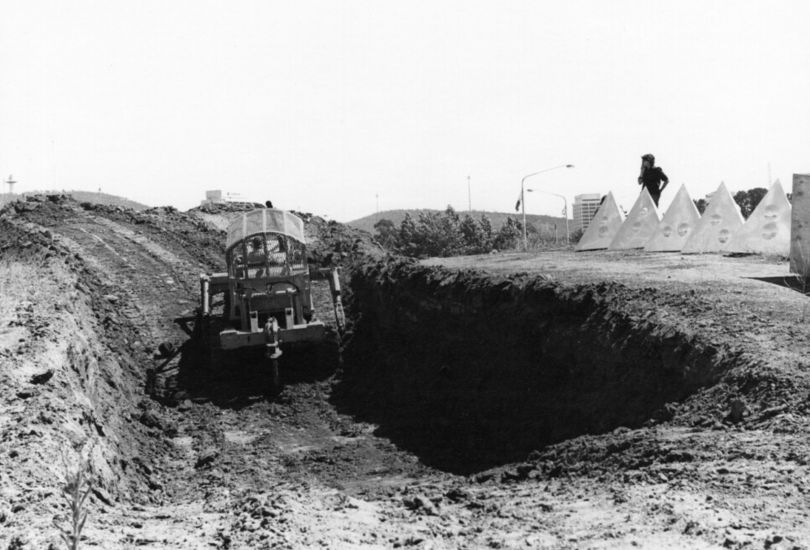
Bert Flugelman’s Earthworks, being buried in Commonwealth Park. Photo: Archives ACT.
The festival, one of the most avant-garde in Australian art history, brought together makers and artists from around the country and included the likes of experimental musician Stephen Jones, who went on to be a member of Severed Heads.
He’d been a defence kid and an ANU physics student, but electronic music changed his whole career. In 1975 he came back to Canberra for the computer and electronic art festival.
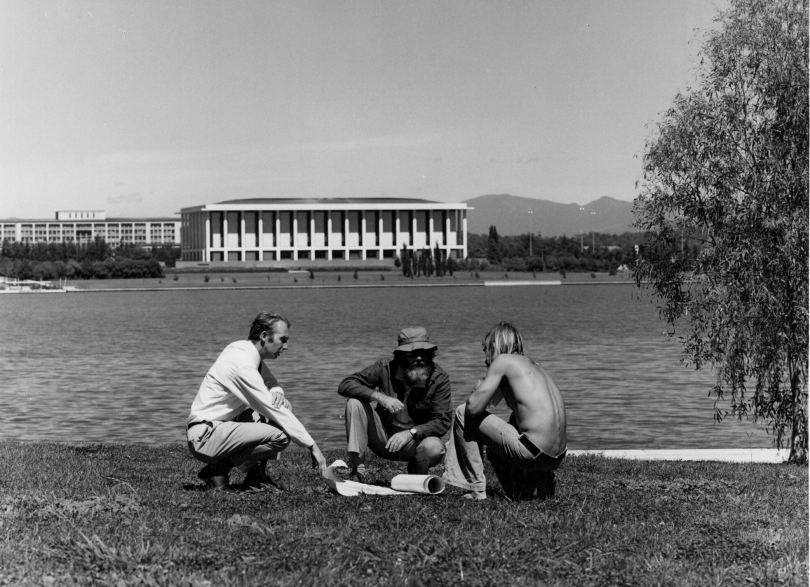
Unloading sculptures for Australia 75 in Commonwealth Park. Photo: Archives ACT.
His was one of multiple stories about groundbreaking public art now largely forgotten, but forming the basis for a symposium at Canberra Museum and Gallery on Thursday that looks at the past and the present through the Contour 556 public art festival lens.
“It took me a year to track the story of the giant lava lamp down,” CMAG curator Virginia Rigney recalls. “So much was temporal and ephemeral, and not well documented.”
The search made Rigney wonder if there was a bigger conversation to be had about the legacy of great projects of the past and also how to activate and energise Civic Square as a place where people make and meet art.
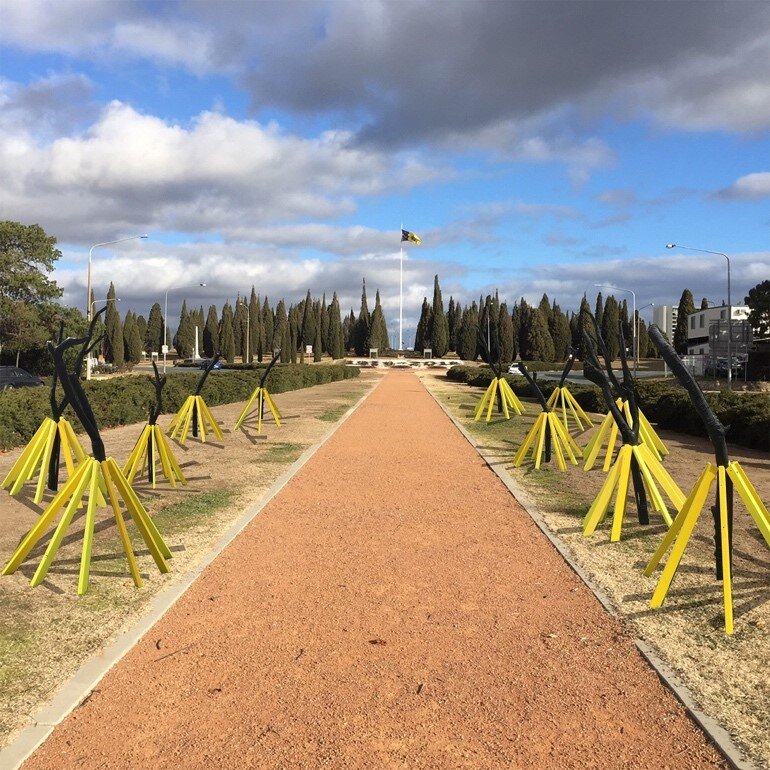
UNforest, by Ro Murray and Mandy Burgess, is part of Contour 556. Photo: Supplied.
A symposium at The Playhouse on Thursday (29 October) attempts to answer some of those questions. Two sessions are being held, at 4.30 pm and 6.30 pm, looking at the legacy and future of making art in Canberra’s public domains.
Speakers include Stephen Jones and Bruce Reynolds, both of whom participated in Australia 75, and current Contour 556 participants who will look at the challenges and importance of delivering a regional contemporary art festival.
CMAG is keen to be a participant in the conversation about how we use Civic Square and the surrounding public spaces of the city, long envisaged as an arts precinct. And Rigney says that after a year of very few public events, she’s hoping that the business community and other people with big ideas about the city will want to attend.
“People struggle with Civic Square but the original architect’s idea was that it would be a place for high-quality contemporary art and installations”, Rigney says. “That sets up the opportunity for re-thinking our ideas about the Square and how much more open it could be.
“As we combine those ideas with understanding more about our past, there’s another provocation about how well we tell those stories.
“Material associated with events like Australia 75 are often ephemeral and don’t make it into the histories. So we need to ask how can it be collected and how can the story be told?”
The Contour 556 public art symposium is being held on 29 October at The Playhouse. Tickets are $20 from Canberra Ticketing.
